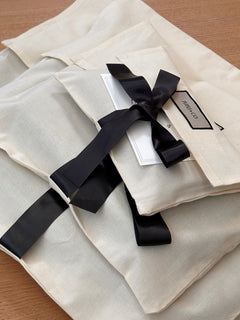The Vegan Leather Myth
If you've taken a recent stroll through the aisles of high-street fashion or dived into the depths of online shopping, you're likely familiar with the buzzword du jour: "vegan leather". It sounds like an ethical consumer's dream come true – leather without the guilt. But, just like the faux fur lining on your new winter coat, there's more to this story than meets the eye. Today, we're unzipping the vegan leather myth and exposing its not-so-glamorous side.
First, let's talk about what vegan leather really is. You might imagine fields of pineapples and apples gracefully offering their peels to be transformed into your next statement bag. However, the reality is far less enchanting. Yes, some vegan leathers are made from fruit waste, but they're the minority. The majority? They're synthetic, born from petroleum-based products like PVC and Polyurethane - not exactly what you had in mind when you envisioned an 'eco-friendly' alternative, right?
While synthetic vegan leather doesn't contribute to the meat industry, its production isn't exactly kind to Mother Nature. Turning petroleum into faux leather requires a cocktail of chemicals, and the process releases harmful pollutants into the environment. Not to mention, synthetic leather doesn't biodegrade, which means that sassy vegan leather jacket could end up in a landfill for hundreds of years.
Real leather, especially when sourced responsibly and tanned using traditional, vegetable-based methods, is a sustainable material. Not only is it a byproduct of the meat industry (meaning the hides are not additional resources but would otherwise go to waste), but its durability also means it lasts for decades. A quality leather bag or pair of boots can be a lifelong companion, aging gracefully with a unique patina that only adds to its charm.
Moreover, contrary to its vegan counterpart, real leather is biodegradable. It returns to the earth after its life cycle, leaving minimal trace behind.
The production of real leather can also support local economies. From the farmer to the artisan, each step in the creation of a leather product can be traceable, creating a chain of accountability that's often missing in the world of fast, synthetic fashion.
So, next time you see the term "vegan leather" flashing on a tag, remember to unzip the hype and look inside. What's more sustainable: a natural, biodegradable material that supports local communities and lasts for years, or a plastic product, wrapped in green jargon, destined for a landfill?
Remember, 'vegan' does not always mean 'better for the planet'. As conscious consumers, it's our responsibility to question, to research, and to make informed decisions. Real leather isn't perfect, but when made correctly, it's a choice that carries weight – in quality, sustainability, and style.






